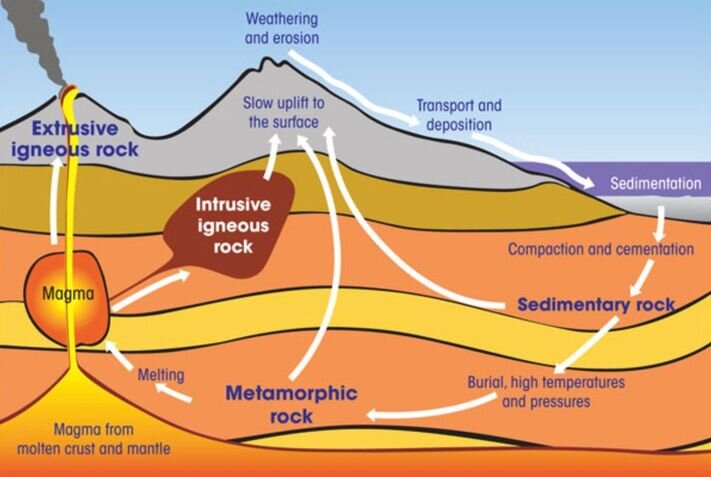Rock Cycle
/On Friday we learned about different types of rocks and how they were formed. If you missed it, you can see that lesson here: http://www.soundviewcamp.com/nature-blog/2020/4/10/types-of-rocks
Today we are going to learn about what happens to rocks after they are formed.
Photo: eschooltoday.com
Rocks on Earth’s surface are exposed to many things that break them down into smaller pieces of rock. This process is called weathering. Wind, water, chemicals, and natural disasters all cause weathering. The wind itself may cause pieces of rock to break off it’s parent rock but even more likely is that wind can carry something such as sand that wears away at rocks. Water is often the culprit of weathering. Think of the Grand Canyon. Overtime the force of the water pushing against the sandstone carved a deep path, the canyon. This happens with ice as well. The Puget Sound was formed by glaciers that carved out the path that water now fills. Often water, liquid or solid, will also carry rocks with it. When these rocks hit other rocks it causes weathering as well. Water can also get stuck in the cracks of rocks and freeze. When water freezes it expands, causing the crack in the rock to get wider until it breaks off. Earthquakes, landslides, volcanic eruptions and more are also responsible for weathering.
After the rocks break they are carried away from their original location and brought somewhere else. This process is called erosion. Wind, water, and natural disasters move rocks in addition to breaking them. Gravity is another force that causes erosion. As the rocks travel away from their original location they may be dropped in another location such as the base of a mountain, the end of a river, or a sand dune. This process is called deposition. Sometimes these small rocks, such as sand, move again but sometimes they stay there. As more sand, silt or mud piles up in layers, it can eventually create sedimentary rocks.
Photo: USGS.gov
The rocks that are underground go through different changes. Some maybe transformed into a metamorphic rock by heat of magma or the pressure of rocks being pushed together. In some areas of the Earth, the rock gets pushed underground and is melted, joining the underground magma. This magma can then become either intrusive or extrusive igneous rock. This process is called subduction and is currently happening off our coast.
Rock Cycle Photo: forbes.com






